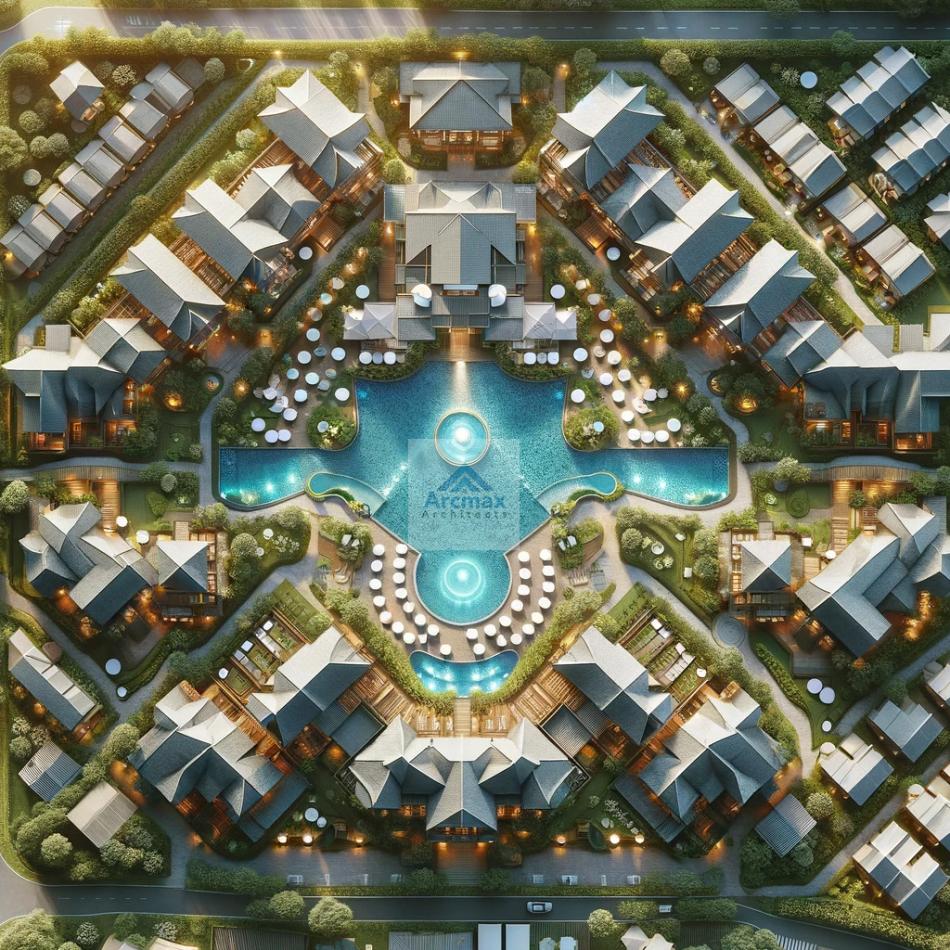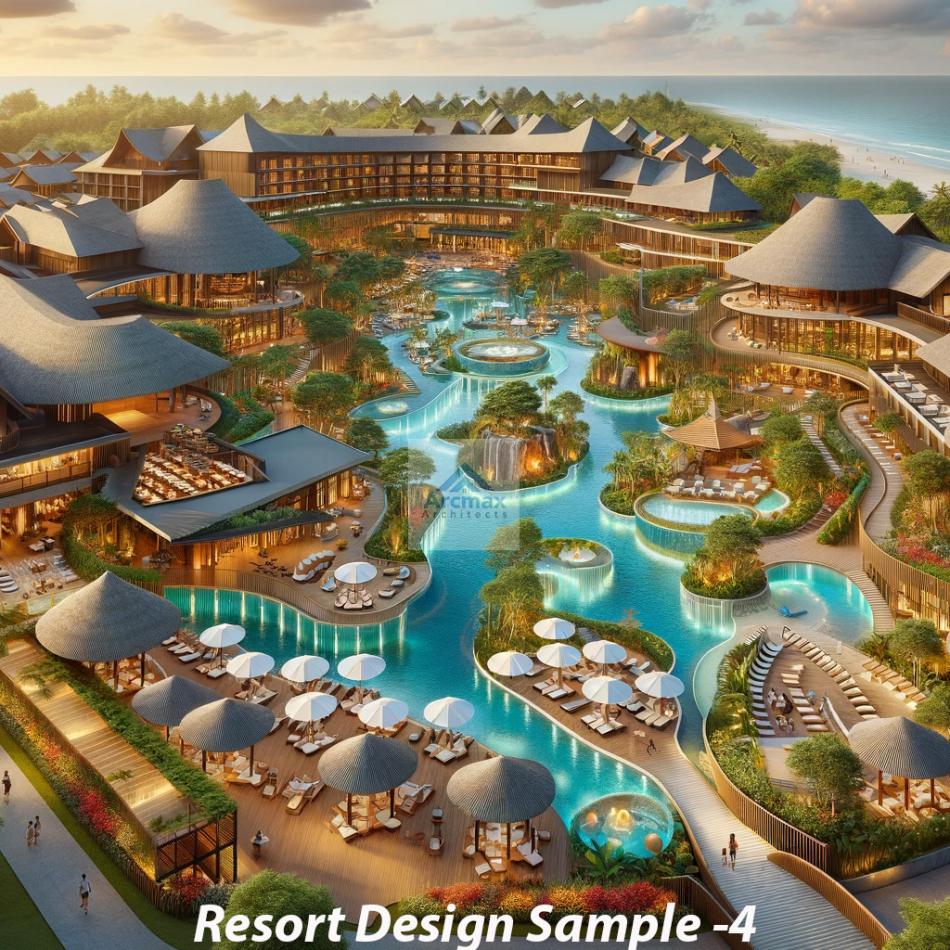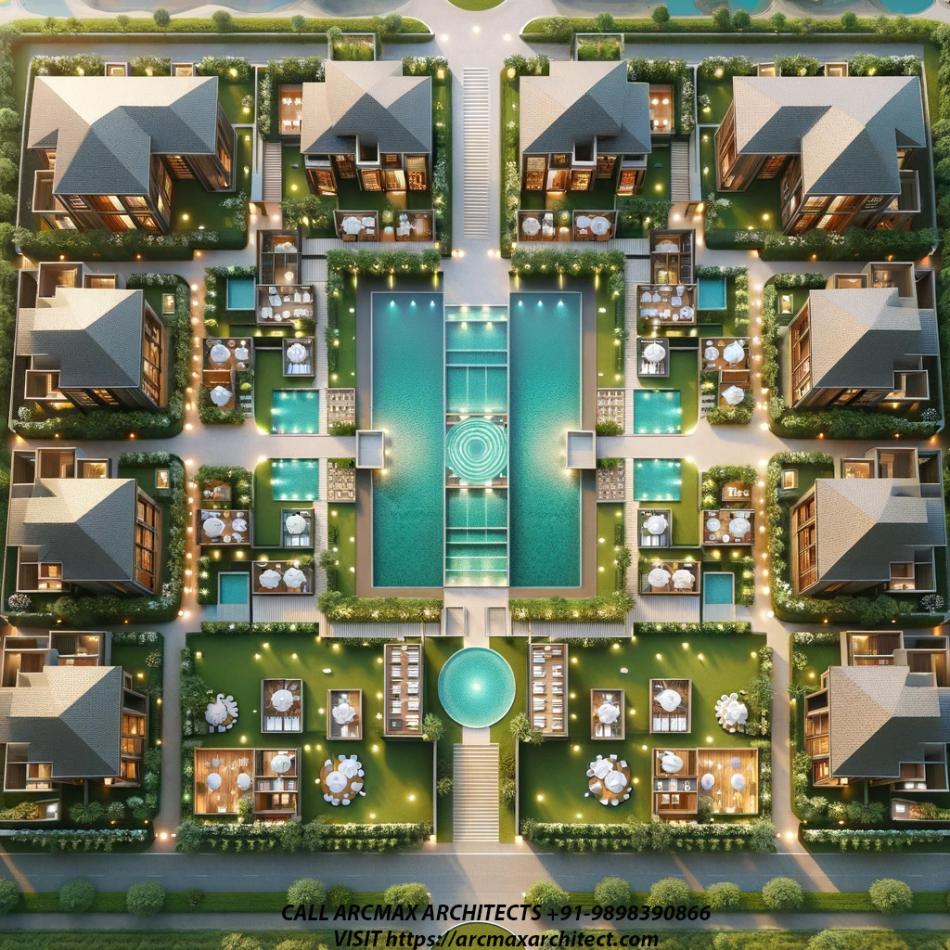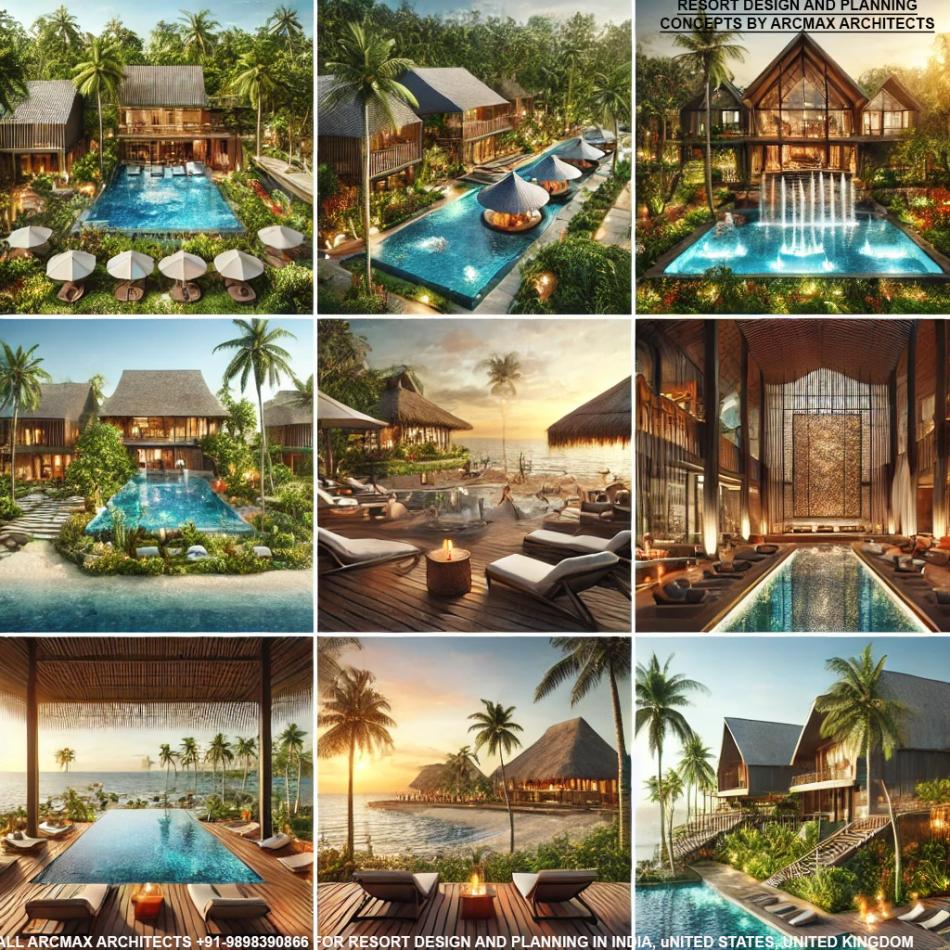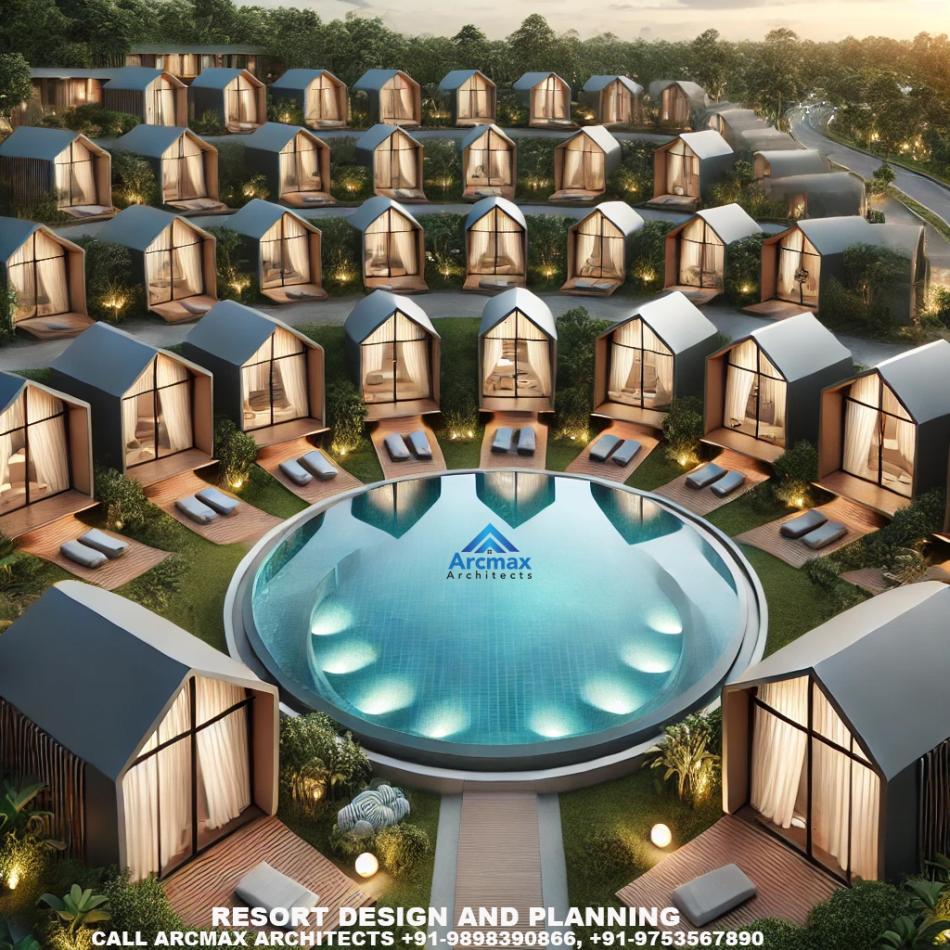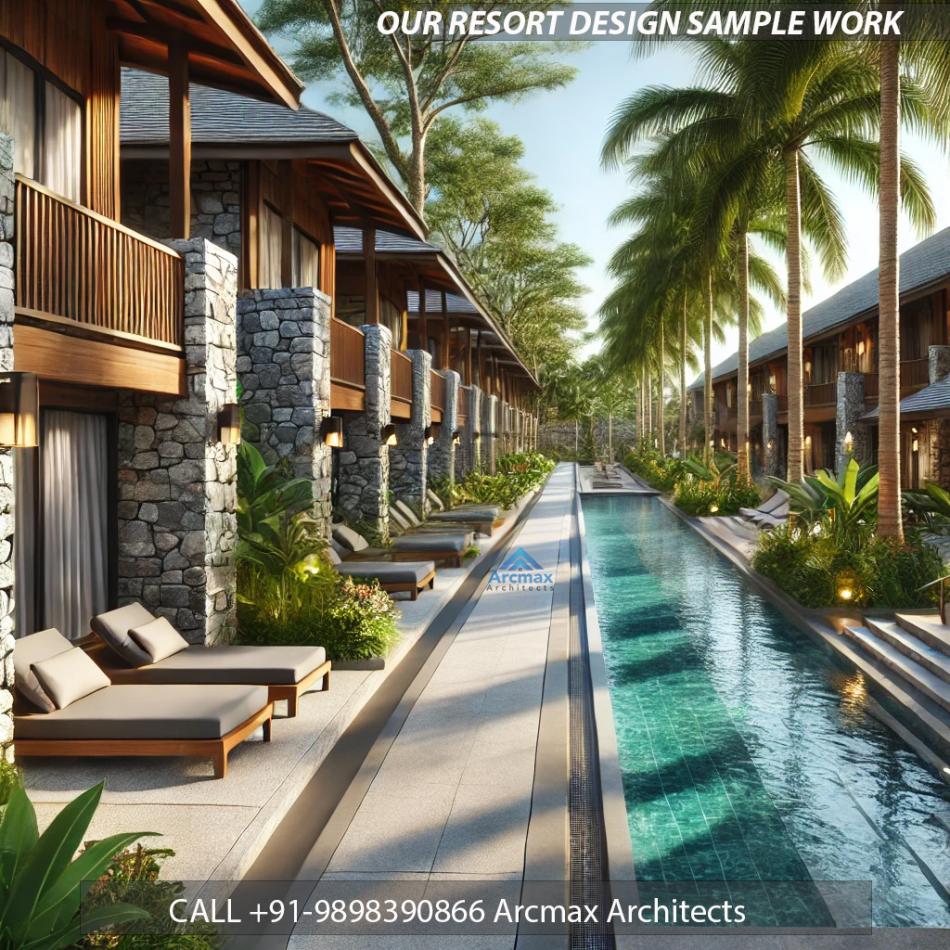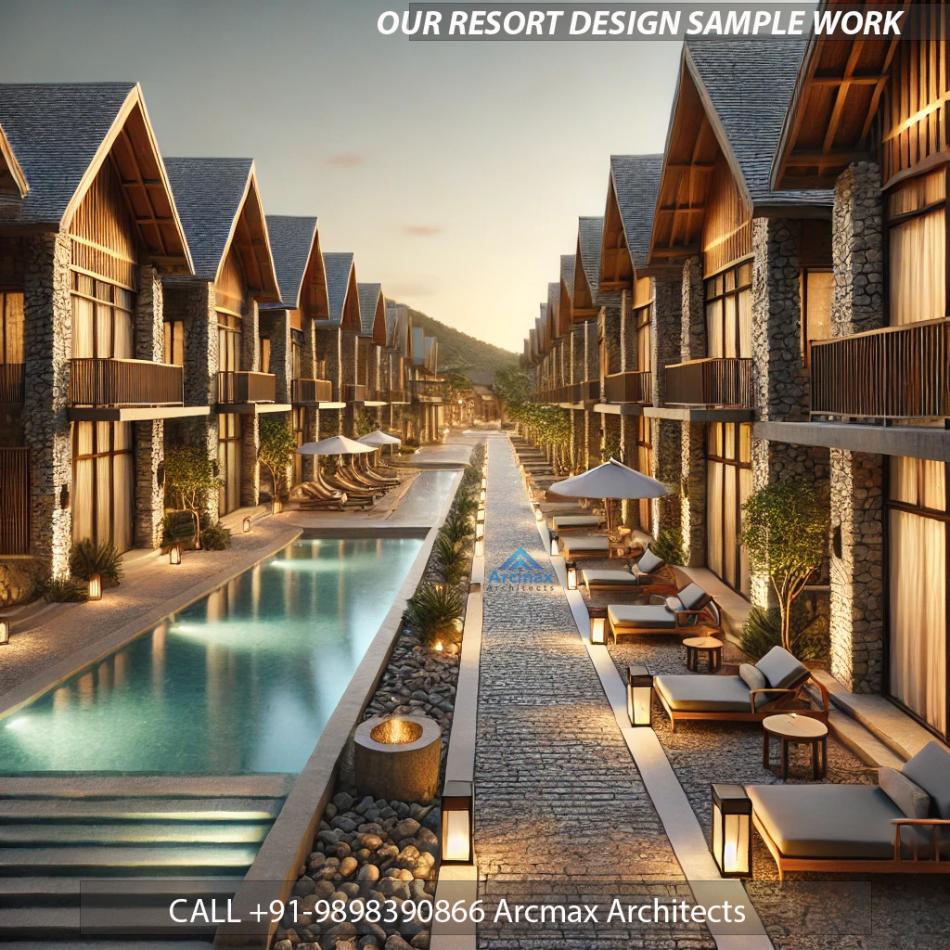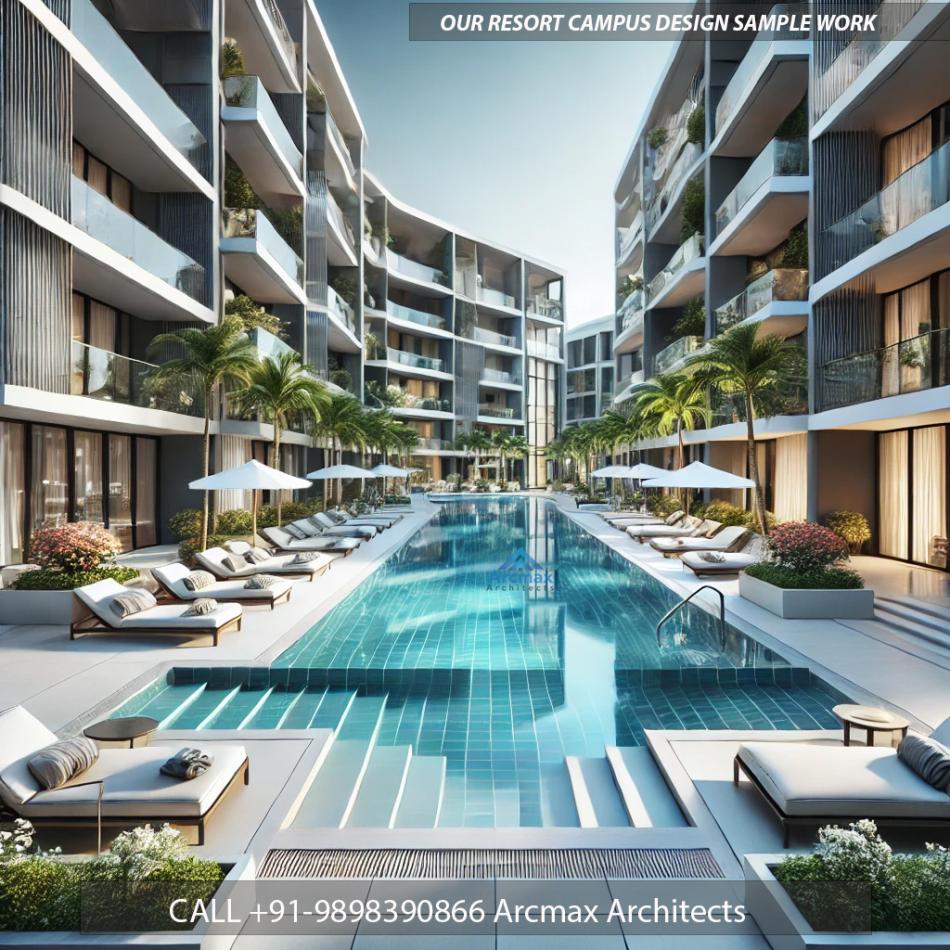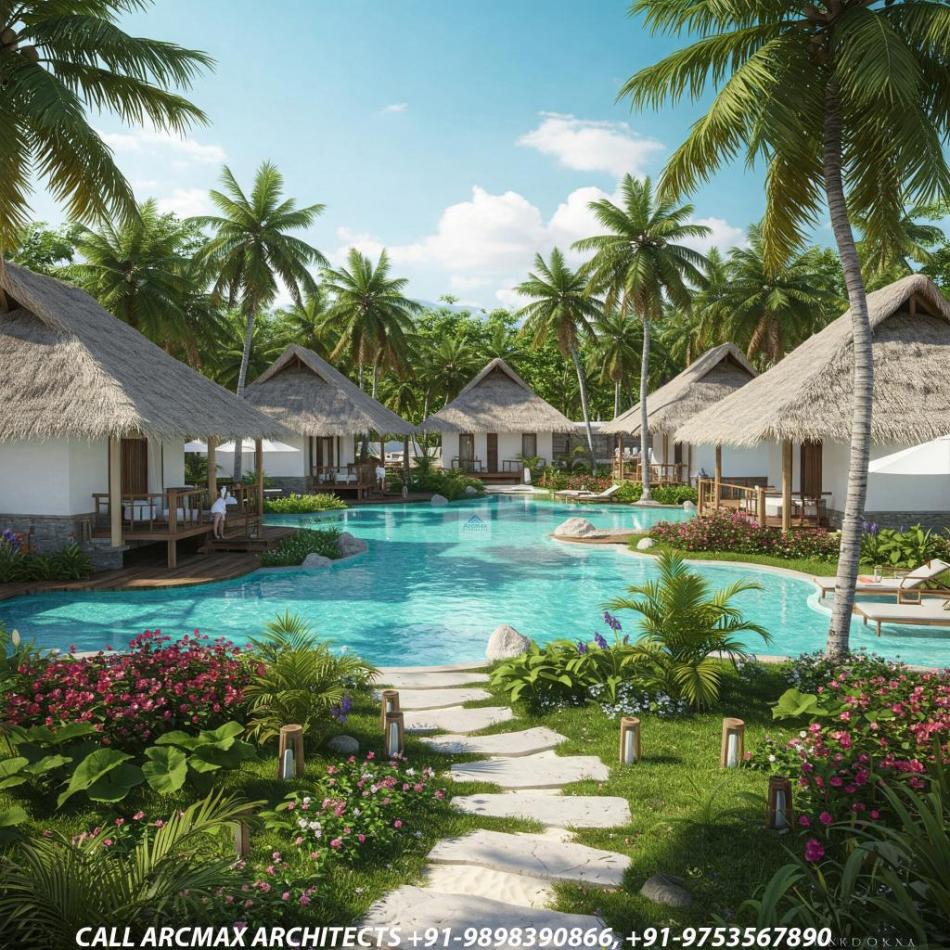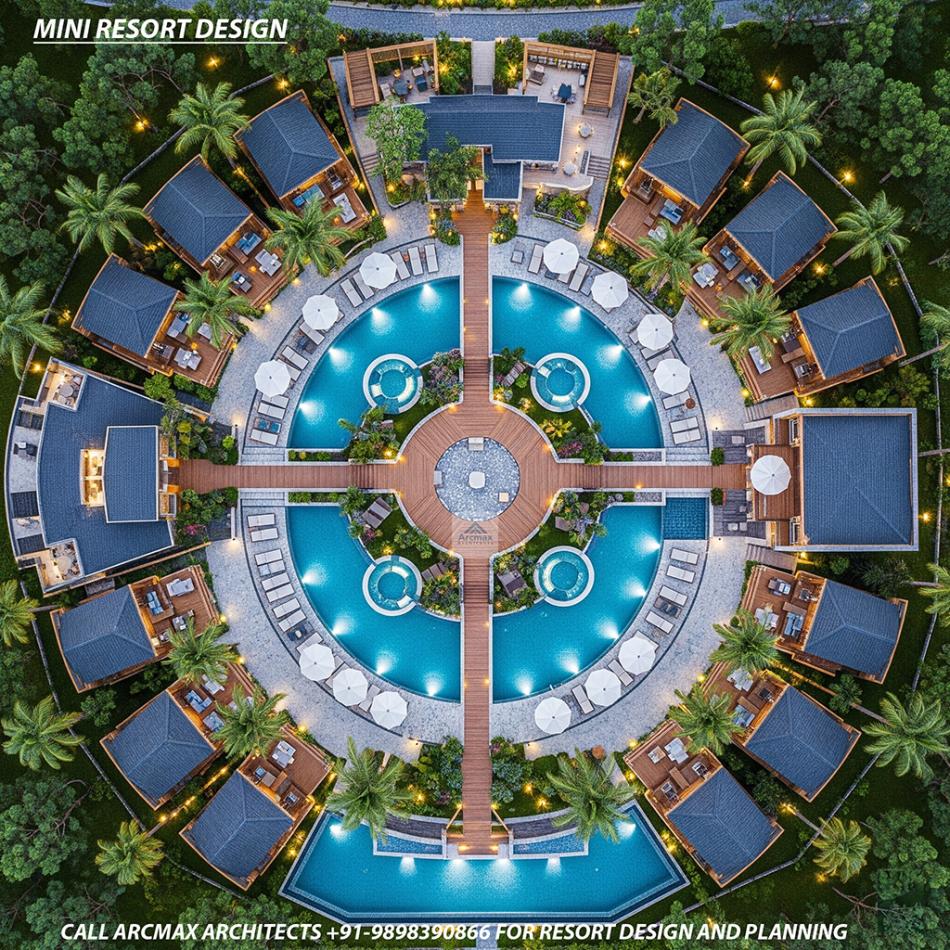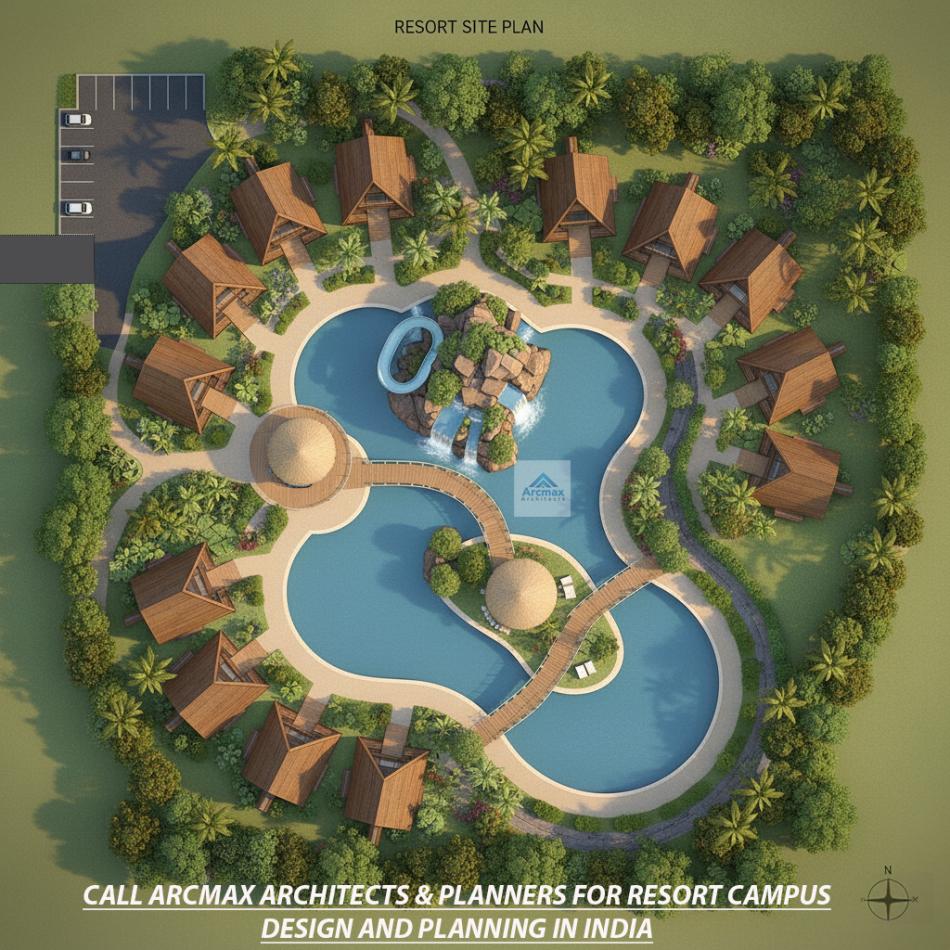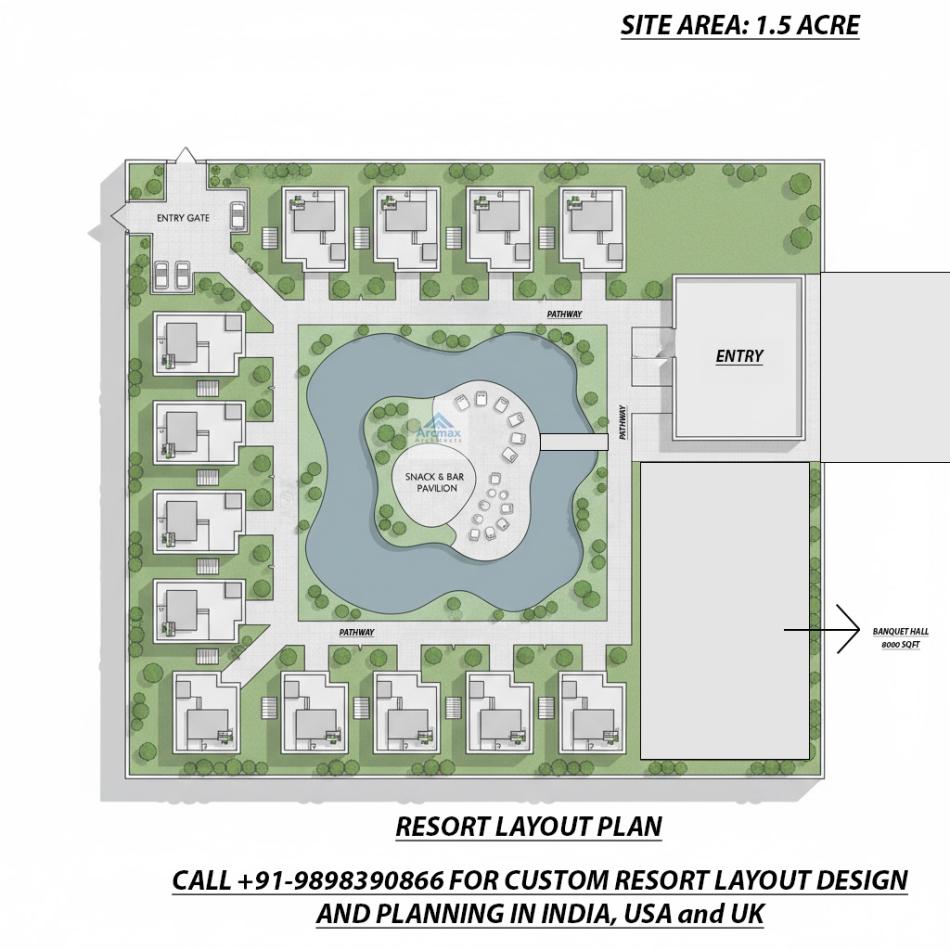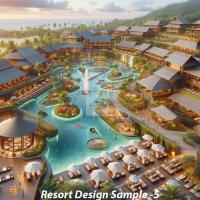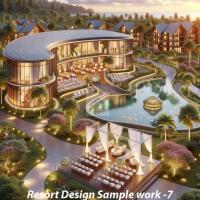Bakeri City, Pincode: 380015 Ahmedabad, Gujarat, India,
244 Madison Avenue, New York, United States
Our Client






Landscape Design and Planning
Landscape Design and Planning by ArcMax Architects, call +91-9898390866 for Landscape design of Resorts, Hotel, schools, township, water park and healthcare projects in india, USA and UK
Defining Landscape Design and Planning
Landscape design and planning is the art and science of arranging outdoor spaces to achieve aesthetic and functional goals. It involves the strategic use of plants, hardscapes, water features, lighting, and other elements to create harmonious environments. Landscape design caters to various settings, including residential gardens, commercial properties, and public parks, enhancing their visual appeal and usability.
The Importance of Landscape Design
Landscape design plays a crucial role in enhancing the quality of life by creating beautiful and functional outdoor spaces. In residential areas, it transforms yards into serene retreats. For commercial properties, a well-designed landscape can attract customers and improve employee well-being. Public spaces benefit from thoughtful landscape design by offering communities aesthetically pleasing and sustainable environments.
Key Elements of Landscape Design
Plants and Greenery
Plants are the backbone of any landscape design. They provide color, texture, and structure to outdoor spaces. Choosing the right plants based on climate, soil type, and maintenance requirements is essential for creating a thriving garden.
Hardscapes
Hardscapes include non-living elements like patios, walkways, retaining walls, and driveways. These features add functionality and define different areas within the landscape. Materials such as stone, brick, and concrete are commonly used for hardscaping.
Water Features
Water features like fountains, ponds, and waterfalls add a sense of tranquility and elegance to any landscape. They can serve as focal points and enhance the sensory experience with the sound of flowing water.
Lighting
Outdoor lighting extends the usability of outdoor spaces into the evening and highlights key features of the landscape. It also enhances safety and security. Options range from solar-powered garden lights to sophisticated landscape lighting systems.
Outdoor Furniture
Outdoor furniture provides comfort and functionality to outdoor living spaces. It includes seating, tables, and accessories that complement the overall design and allow for relaxation and entertainment.
Sustainability
Modern landscape design emphasizes sustainability. This involves using native plants, incorporating water-saving irrigation systems, and selecting eco-friendly materials. Sustainable landscapes are not only beautiful but also reduce environmental impact and maintenance costs.
Steps in the Landscape Design and Planning Process
Initial Consultation
The process begins with an initial consultation where clients discuss their vision, needs, and budget with the landscape architect. This step is crucial for understanding the scope of the project and setting clear goals.
Site Analysis
A thorough site analysis is conducted to assess the property's existing conditions. This includes evaluating soil quality, drainage, sunlight exposure, and existing vegetation. Site analysis helps in making informed decisions during the design process.
Design Concepts
Based on the site analysis and client input, the landscape architect develops initial design concepts. These concepts include sketches, layout plans, and mood boards that capture the overall vision for the landscape.
Client Collaboration
Client collaboration is essential throughout the design process. Regular meetings and feedback sessions ensure that the design aligns with the client's expectations and preferences.
Final Implementation
Once the design is finalized, the project moves to the implementation phase. This involves selecting contractors, sourcing materials, and overseeing the construction and installation of landscape elements.
Benefits of Professional Landscape Design
Aesthetic Benefits
Professional landscape design enhances the beauty of outdoor spaces. It creates visually appealing environments that reflect the client's style and preferences.
Environmental Benefits
Sustainable landscape practices contribute to environmental conservation. Native plants and efficient irrigation systems reduce water usage and support local ecosystems.
Economic Benefits
A well-designed landscape can significantly increase property value. It also improves curb appeal, attracting potential buyers or tenants.
Examples of Enhanced Properties
For example, a commercial property with a professionally designed landscape can attract more customers and improve the overall perception of the business. Similarly, a beautifully landscaped residential property can provide a serene retreat for homeowners and increase market value.
Trends in Landscape Design
Native Landscaping
Using native plants is a growing trend in landscape design. Native plants are adapted to the local climate and require less maintenance and water, making them a sustainable choice.
Outdoor Living Spaces
Creating outdoor living spaces that function as extensions of indoor areas is increasingly popular. Features like outdoor kitchens, lounges, and fire pits make outdoor spaces versatile and enjoyable year-round.
Sustainable Practices
Sustainable landscape design practices include rainwater harvesting, composting, and using recycled materials. These practices reduce the environmental footprint and create eco-friendly landscapes.
Smart Garden Technology
Integrating smart technology into landscapes is a trend that enhances convenience and efficiency. Smart irrigation systems, automated lighting, and weather sensors help maintain landscapes with minimal effort.
Tips for Successful Landscape Planning
Budget Management
Establishing a clear budget is crucial for landscape planning. It helps prioritize features and ensures that the project stays within financial constraints.
Selecting the Right Plants
Choosing plants that thrive in the local climate and soil conditions is essential. Consider maintenance requirements and growth patterns to ensure a sustainable and attractive landscape.
Maintaining the Landscape
Regular maintenance is key to keeping landscapes beautiful and healthy. This includes watering, pruning, fertilizing, and pest control. A maintenance plan should be established from the outset.
Case Studies and Examples
Successful Landscape Design Projects by ArcMax Architects
One notable project is the transformation of a residential property in Indore. The design incorporated native plants, sustainable materials, and modern outdoor living spaces. The result was a stunning, eco-friendly garden that enhanced the property's value and aesthetic appeal.
Challenges and Solutions
In another project in Bhopal, ArcMax Architects faced the challenge of poor soil quality. The team implemented soil improvement techniques and selected hardy plant species, resulting in a lush and thriving landscape.
Landscape design and planning by ArcMax Architects transform ordinary spaces into extraordinary environments. The integration of nature, luxury, and functionality creates landscapes that are not only beautiful but also sustainable and practical. Whether for residential, commercial, or public spaces, professional landscape design offers numerous benefits, from enhanced aesthetics to increased property value. Contact ArcMax Architects today to bring your vision of a perfect landscape to life.


